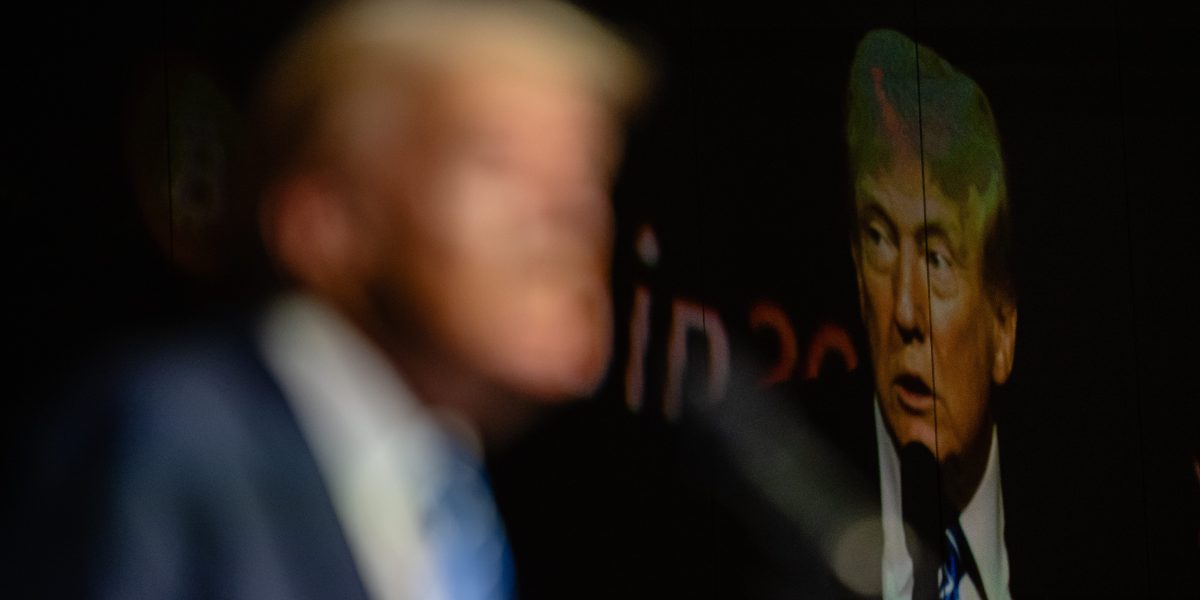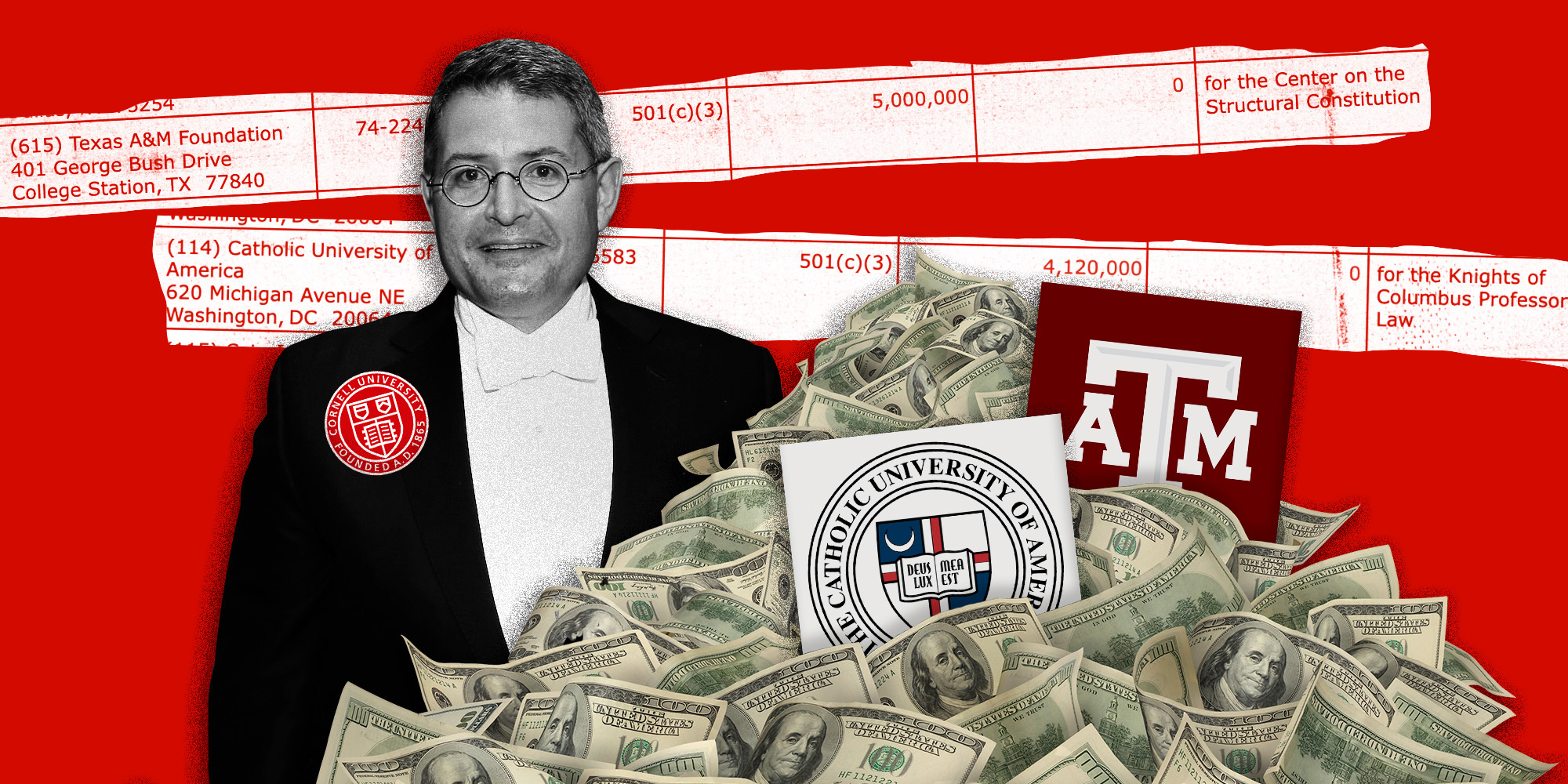This week, the Supreme Court truly delivered when it comes to hobbling oversight over securities fraud, pollution, and other regulatory matters. In two key decisions, the conservative majority cast doubt on some of regulatory agencies’ most important oversight mechanisms and tossed a longstanding doctrine about their authority to interpret legal questions within their specialized lanes.
Together, these rulings further one of the prime directives of the conservative legal movement, enshrined in the Project 2025 manifesto: “deconstruct the Administrative State.” The decisions also further consolidate authority within the federal judiciary.
In the first decision, SEC v. Jarkesy, issued Thursday, the conservative majority undercut oversight agencies’ ability to issue fines and penalties through specialized administrative proceedings instead of backlogged federal courts. In the second, Loper Bright Enterprises v. Raimondo, issued Friday, the conservative majority struck down a landmark decision about regulators’ role in interpreting the law.
Both cases were decided 6-3, along ideological lines.
Writing for the dissenting liberal justices in Loper Bright, Justice Elena Kagan paired the two decisions as showing “the Court’s resolve to roll back agency authority, despite congressional direction to the contrary” as well as the conservative majority’s eagerness to jettison “settled law” like Roe v. Wade.
Allison Zieve, litigation director at watchdog Public Citizen, said the decisions were a power grab.
“Like the Jarkesy decision from yesterday, today’s decision increases the courts’ authority at the expense of the other two branches,” Zieve told The Intercept.
Chief Justice John Roberts wrote both decisions and in both, the conservative majority followed the paths urged by the U.S. Chamber of Commerce and conservative advocacy organizations like America First Policy Institute.
“Like the Jarkesy decision from yesterday, today’s decision increases the courts’ authority at the expense of the other two branches.”
Earlier this term, over the howling objections of Justices Samuel Alito and Clarence Thomas, the court stopped short of holding that an entire oversight agency, the Consumer Finance Protection Bureau, was unconstitutional by design. Instead, the conservative majority is taking the tack of hamstringing regulators.
The SEC decision eliminates one of the enforcement mechanisms Congress created in the wake of the 2008 financial crisis. In the Dodd-Frank Act, passed in 2010, Congress authorized the Securities and Exchange Commission to impose civil penalties against fraudsters through administrative hearings instead of a full-fledged federal trial. The Supreme Court ruled that this mechanism violated the constitutional rights of the plaintiffs — a hedge fund manager and his firm — to a jury trial.
The ruling has implications far beyond the SEC. As Justice Sonia Sotomayor, writing for the three liberal dissenters, pointed out, it casts doubt on similar administrative enforcement mechanisms at more than two dozen agencies, including the CFPB, Environmental Protection Agency, and Food and Drug Administration.
“Today’s ruling is part of a disconcerting trend,” Justice Sonia Sotomayor wrote for the three liberal justices in her SEC dissent. “When it comes to the separation of powers, this Court tells the American public and its coordinate branches that it knows best.”
The Loper Bright case originated from a seemingly minor dispute over fishing regulations, but conservatives used it to challenge a key feature of oversight agencies: their role in interpreting the laws they enforce. In a 1976 decision reviled by conservatives, Chevron v. Natural Resources Defense Council, the Supreme Court ruled that courts should defer to agencies’ reasonable interpretations of ambiguous statutes.
“The Chevron doctrine was an effort by the earlier Supreme Court and lower courts to respect the separation of powers,” Zieve told The Intercept, “by respecting Congress’s decision to delegate authority to agencies to implement regulatory statutes and not aggrandizing the role of the courts.”
On Friday, the conservative majority struck down the Chevron doctrine. In her dissent, Kagan fleshed out how sprawling the effects would be.
“That rule has formed the backdrop against which Congress, courts, and agencies — as well as regulated parties and the public — all have operated for decades,” Kagan wrote. “It has been applied in thousands of judicial decisions. It has become part of the warp and woof of modern government, supporting regulatory efforts of all kinds — to name a few, keeping air and water clean, food and drugs safe, and financial markets honest.”
The Loper Bright majority ruled that prior decisions that applied Chevron to questions about the scope of the Clean Air Act and other laws are still good law, for now.
This week’s rulings set the table for other conservative challenges already making their way to the court, including attacks on the National Labor Relations Board and the Federal Trade Commission.
“Taken together, these cases continue the pattern of the Supreme Court taking power for the federal judiciary and away from people who are accountable to elected officials,” said Georgia State University law professor Eric Segall. “The justices are accountable to no one.”
Latest Stories

AIPAC Millions Take Down Second Squad Member Cori Bush
Bush was early calling for a ceasefire in Israel's war on Gaza. Then AIPAC came after her with millions of dollars.

The U.S. Has Dozens of Secret Bases Across the Middle East. They Keep Getting Attacked.
An Intercept investigation found 63 U.S. bases, garrisons, and shared facilities in the region. U.S. troops are “sitting ducks,” according to one expert.

What Tim Walz Could Mean For Kamala Harris’s Stance on Gaza and Israel
Walz allows for Harris to “turn a corner” in her policy on the war in Gaza, said James Zogby, president of Arab American Institute.









